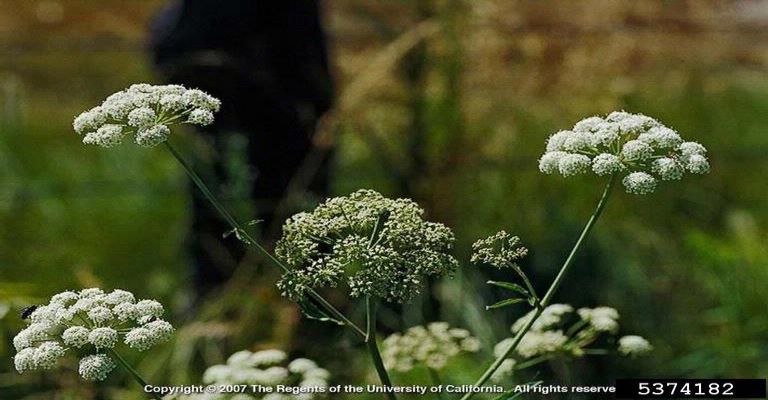Take a look at your pasture, the dry weather may be causing toxic plants to become the main source of forage.
August 16, 2021

The growing season the last two years has been fairly dry. Pasture and hay fields that have been stressed will have an increased pressure from weeds that can out grow our good forages that are dry and stressed. Although not all weeds are poisonous to cattle, some are either always poisonous or can accumulate toxins under the right conditions. Fields that have been fertilized to get better forage growth may increase the nitrate content of some plants.
Spotted Hemlock is very toxic to all animals but is fortunately not very palatable to livestock. I have seen acute deaths in cattle in overgrazed pastures when spotted hemlock was one of the few green plants left. Hemlock can encroach into your fields if the ground is disturbed. Additionally, if you are getting hay from alternative sources such as road ditches or CRP, weeds such as hemlock could be a concern. One pound of hemlock forage is sufficient to cause sudden death in cattle. However, lower amounts can cause deformed calves if consumed at certain times during gestation.
White snakeroot is another toxic plant that is usually not palatable but is common in wooded areas and will encroach into disturbed areas. Consumption of small amounts of snakeroot over time leads to condition known as “trembles.” Snakeweed can become abundant in late summer when other forages have been grazed down and the toxin remains active when incorporate into hay. Additionally, the toxin can be passed in milk so nursing calves (especially fall born calves) can be at risk.
Lambsquarter and pigweed will accumulate nitrates especially after fertilization and are common in stressed pastures or other disturbed soils. Additionally, treating these broadleaf weeds with herbicides can make them more palatable so follow label grazing restrictions. Lastly, there are many species of nightshades that are poisonous, especially the non-ripe fruit. Although livestock will generally avoid the plant, it can be incorporated into hay where the toxin will persist.
Prevention of plant poisoning requires good pasture management and inspection of hay. Contact your extension beef specialist or agronomist for pasture management help. If you suspect a potential toxicity contact your veterinarian for diagnosis and treatment guidelines.
You May Also Like



